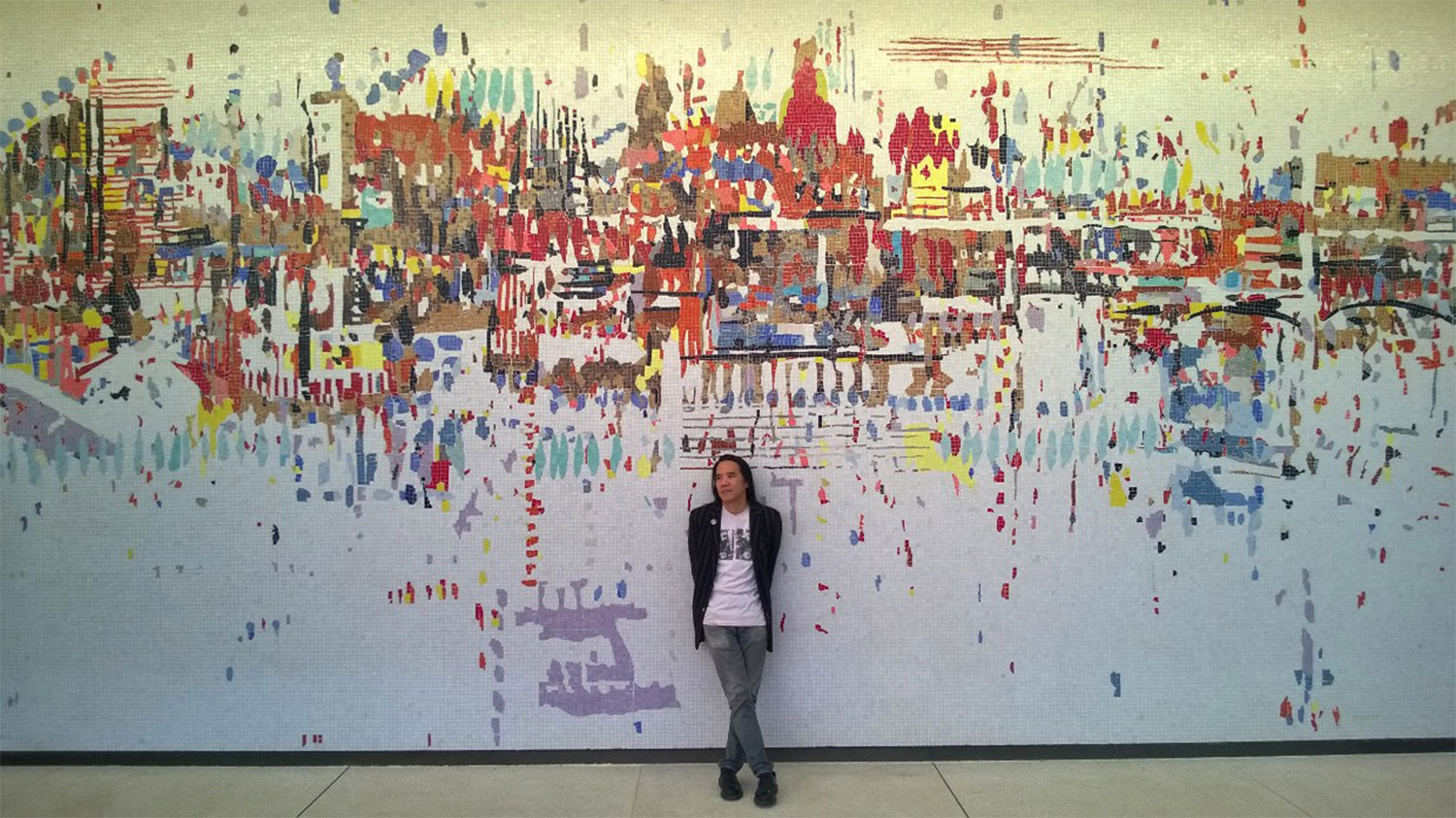Back in February 2020, I wrote about Wayne Thiebaud and the show 100: Paintings, Prints, and Drawings, which was due to open at the Crocker Art Museum in October of that year. Because of the pandemic, the museum was closed for part of the scheduled run, so the exhibition probably didn’t turn out to be the 100th birthday celebration Thiebaud was hoping for and deserved. During the time one could view the show, I was still sheltering-in-place, and did not venture there. Thiebaud passed away in late 2021, and now, after stops in Toledo, OH; Memphis, TN; San Antonio, TX; and Chadds Ford, PA, the show is back in Sacramento, expanded and under the new moniker Wayne Thiebaud: A Celebration, 1920-2021.
Over the years, I’ve been to several surveys of Thiebaud’s work, but on a recent warm, blustery Saturday, I paid a visit to the Crocker to see what I missed out on nearly two years ago. I’d seen much of the work in previous shows or in the Crocker’s permanent collection, although a good portion of the pieces were new to me. Unfortunately, because of the wind, the surrounding agricultural fields, the fact that Sacramento is in a valley, and my overly-vigilant, histamine-releasing immune system, I was sneezing so much I had a hard time focusing on the work. I spent about an hour and a half in the galleries before I gave up, went home with red eyes and a runny nose, and crashed on the sofa with a box of tissue.
My second excursion to the show was much less allergen-infused and much more enjoyable. Thiebaud’s work is playful and fun; a less angst-ridden notable oeuvre would be difficult to cite.1 His technique of applying the paint to physically mimic the subject, whether it be cake frosting, ice cream, mustard, or potato salad, is signature Thiebaud, consummate and humorous. Of his paintings, I have a preference for the still lifes, not only the food, but the clothes, the makeup, the tools – objects which are designed to be adornments to or extensions of the human form but are presented in unused states.
It’s simple enough to understand why in the early 1960s, given Thiebaud’s subject matter, he was seen as a Pop artist. However, although his serial pies, cakes, and other foods were certainly related to that movement, time has proven him to be a much more traditional painter than that connection would indicate. As early as the mid-’60s, he tried to get away from the Pop label by painting the figure, which he approached in much the same manner as the still lifes – brightly lit, straightforward depictions in austere settings. His figurative work is most compelling when it most resembles the still lifes, when the figures are static, doing absolutely nothing, engaging with no one.2
In the late 1960s and early ’70s, Thiebaud added landscapes, both rural and urban, to his oeuvre. These paintings were often constructed from multiple viewpoints and contain all the movement missing from his figurative work. People rarely appear, and when they do, they are miniscule. As in Asian landscape painting, with which many of the cityscapes share an exaggeration of verticality, the figures shown illustrate the disparity in size and importance between humans and their environment.
As much as I enjoy the paintings, I have had fairly consistent access to them, courtesy of the Crocker, for most of my life. With the exception of the relatively recent “Clown” series, of which I don’t recall ever previously seeing an example, they no longer hold much surprise for me. Consequently, the highlights of the show were the ink and the watercolor thumbnails – simple sketchbook exercises which show Thiebaud’s ability to quickly capture the essence of an object or the attitude of a figure.
I’ve said before that Thiebaud was almost certainly the first contemporary artist of whom I was aware. I told him that once, and he laughed, as though he didn’t think of himself as particularly “contemporary.” I didn’t know him, although over the years I did have several interactions with him in non-art-related circumstances, and he always seemed like a genuinely nice, low-key person. Godspeed, Wayne Thiebaud.
1 My taste, although quite catholic, veers toward the Expressionist. “Playful and fun” generally does not describe what I look for in a painting.
2 A Thiebaud canvas which I saw for the first time on my second trip to see A Celebration was Supine Woman (1963), which was included in a separate exhibition, Twinka Thiebaud and the Art of the Pose. It could be my favorite Thiebaud figure painting I’ve ever seen.




